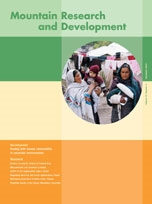Irrigation and River Basin Management: Options for Governance and Institutions, edited by M. Svendsen. Wallingford, United Kingdom: CABI, 2005. xii + 258 pp. US$100, £55. ISBN 978-0-85199-672-1.
The International Water Management Institute (IWMI) is one of the great intellectual powerhouses of thought about water management. This book is an edited volume very largely written by researchers associated with IWMI, and hence is representative of the state of the art of thought about Integrated Water Management (IWM). However, it has the contradictions of an edited volume which is largely derived from papers—in this case, papers discussing management in individual river basins, presented at a workshop on IWM in 2000. The first of these contradictions is that the logic behind the choice of the basins is not entirely obvious; for example, there is no contribution on Australia or Spain. Both are arid countries. The evolution of the Council of Australian Governments (COAG) water reform process in Australia makes it perhaps the most interesting country for IWM in the world, and Spain has produced some of the historically most important examples of institutional evolution.
The case studies in the book are from France, Mexico, South Africa, Turkey, Vietnam, and the USA. One chapter is on the Imperial Valley in California, which is perhaps better seen as a failure rather than as a success: a triumph of subsidy over sustainability. The second contradiction in the volume is that there is a dominant “house” view which is not debated or argued. There is, for example, an implicit expectation that markets and prices are the best means of coordinating action. In the more recent literature, the different functions of pricing in terms of cost recovery, resource allocation, and in changing behavior have been differentiated, and a rather limited role for prices for the latter two purposes has been identified (Cornish et al 2004; Molle and Berkoff 2007). Equally, there is an absence of any sense of history. We have been managing water for millennia; there should be some lessons to learn from the past.
What we see from this book is that Integrated Water Management is currently still a vision rather than a blueprint. Asit Biswas (2004) travels the world asking to be shown a paradigmatic example of IWM, and claims that no one has ever offered an example of even a partial success. The important questions all remain to be answered: Can we do it at all? What do we mean by success if we can do it? And, what is the best means to deliver it? A conceptual weakness here is that whilst “Governance” is part of the book's subtitle, only a very limited definition of the term is provided in the opening chapter and it is then largely abandoned as a concept. The discussion of institutions is also mainly in terms of what institutional theory would label as organizations rather than as institutions: what North (1990) defined as the “players of the game,” whereas institutions are the “rules of the game.” Thus, the book fails to go into any detail on some of the more crucial and difficult issues of institutional design (IHDP 1998). The result is a discussion of work in progress rather than a recipe book of how to do it. Hence, the greatest interest may lie in what these case studies tell us about common problems.
One universal problem that emerges is the management of the groundwater resource. Here, rules have not caught up with technology. Until cheap kinetic energy was available, the physical limitations on the amount of water that could be extracted meant that groundwater could be left as an open-access resource. The subsequent development of cheap kinetic energy resulted almost universally in over-exploitation of groundwater. For the same reasons, groundwater has typically been left out of the analysis; the whole logic of catchment management is instead based upon runoff. Yet, the global groundwater resource is estimated to be around 70 times the global annual precipitation. Somewhat similarly, precipitation is seen as an open-access resource as well: each landowner has a free right to either capture that precipitation or to dispose of the runoff. Yet rivers are other people's runoff, and so the chapter on the Oliphants basin in South Africa reports that commercial forestry is regarded as a streamflow reduction activity and, hence, subject to the provisions of the National Water Act.
Overall, this is a book which is well worth reading even though it does not provide any general answers. The general answer at present may be that it is extremely difficult to deliver IWM and that, since there is no paradigmatic model of IWM to follow, perhaps the only way we can learn is from case studies. In this sense, failure may have as much to teach us as success.





